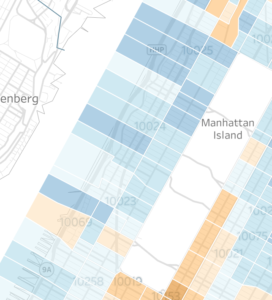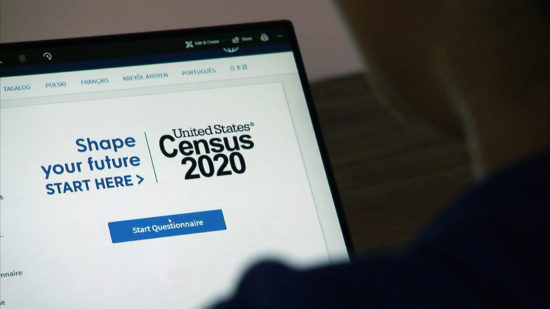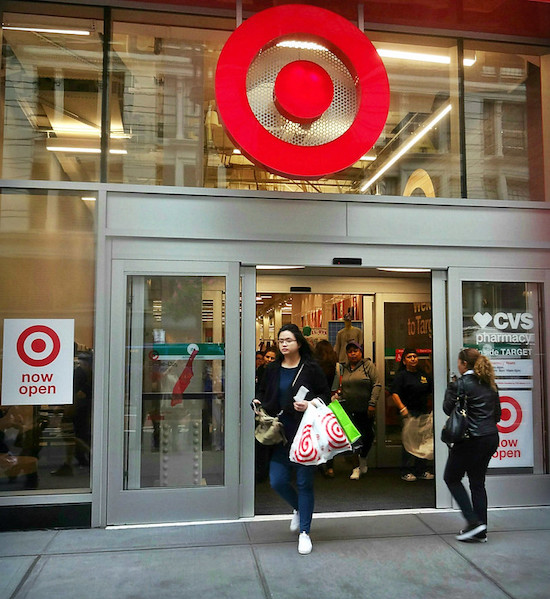The Trump administration announced it was moving up the deadline for in-person responses to the 2020 Census to Sept. 30 from Oct. 31, a move that Democrats say will result in vulnerable groups being undercounted.
 Most people respond to the Census by mail or online, as opposed to being visited by a worker. On the Upper West Side, the response rate has been pretty good but not great. About one-third of the Census tracts in the neighborhood are trending above the national average of 63.4%. Other areas are doing much worse. In one section of Morningside Heights, the response rate is 32%.
Most people respond to the Census by mail or online, as opposed to being visited by a worker. On the Upper West Side, the response rate has been pretty good but not great. About one-third of the Census tracts in the neighborhood are trending above the national average of 63.4%. Other areas are doing much worse. In one section of Morningside Heights, the response rate is 32%.
Some might say that the Upper West Side is doing “good enough.” But given that this is clearly a great neighborhood, it’s time to either mail those Census forms in, respond by phone at 844-330-2020, or just fill them out online. Getting an accurate count will lead to getting our fair share from the federal budget and it impacts other crucial issues like political redistricting — fewer people means fewer congressional reps.
You can dive into the response rates here.
And here’s what you can expect if a Census taker shows up at your apartment:
What Households Can Expect
In most cases, census workers will make up to six attempts at each housing unit address to count possible residents. This includes leaving notification of the attempted visit on the door. The notification will include reminder information on how to respond online, by paper or by phone. In addition, census workers may try to reach the household by phone to conduct the interview.
Census takers will go to great lengths to ensure that no one is missed in the census. After exhausting their efforts to do an in-person interview with a resident of an occupied housing unit, they will seek out proxy sources — a neighbor, a rental agent, a building manager or some other knowledgeable person familiar with the housing unit — to obtain as much basic information about the occupants as they can.
Census takers are hired from local communities. All census takers speak English, and many are bilingual. If a census taker does not speak the householder’s language, the household may request a return visit from a census taker who does. Census takers will also have materials on hand to help identify the household’s language.
How to Identify Census Takers
Census takers can be easily identified by a valid government ID badge with their photograph, a U.S. Department of Commerce watermark, and an expiration date on the badge. To confirm a census taker’s identity, the public may contact their regional census center to speak with a Census Bureau representative.
The Census Bureau Will Follow Up With Some Households by Phone
In order to minimize the need to send census takers to households in person, the Census Bureau is training census takers to follow up with households by phone. Using information provided to the Census Bureau and third-party purchased data, the Census Bureau has a strong contact list for both landlines and cellphones assigned to houses on the Census Bureau’s address list. These phone calls will enable the Census Bureau to have maximum flexibility for conducting field operations, and is one more method that census takers can use to reach nonresponding households. Phone calls will be used on an as-needed basis and when in-person contact attempts have not resulted in an interview. If a voicemail is available, the census taker will leave a message asking the household to call one of the Census Bureau’s call centers.
Census Response Representatives to Visit Low-Responding Areas
The Mobile Questionnaire Assistance (MQA) program will continue through Sept. 30. This is a separate activity from census takers going door to door. MQA representatives are in open, public places in the lowest-responding areas of the nation to encourage people to respond to the 2020 Census. These locations are where people naturally visit when leaving home and can be used to help increase self-response rates. MQA is part of the Census Bureau’s final push to encourage people to complete the 2020 Census.
About the 2020 Census
The U.S. Constitution mandates a census of the population every 10 years. The goal of the 2020 Census is to count everyone who lives in the United States on April 1, 2020 (Census Day). Census statistics are used to determine the number of seats each state holds in the U.S. House of Representatives and inform how billions of dollars in federal funds will be allocated by state, local and federal lawmakers annually for the next 10 years.
For more information, visit 2020census.gov.








How, in the middle of a pandemic, are census workers expected to knock on doors and speak face to face with strangers, exposing everybody involved to the the possibility of infection? How are householders in a city like New York expected to open the door to strangers who might be from ICE or another threat to their immigration status? I absolutely understand the need for an accurate count, but the Census Bureau seems to think that the U.S. is one big Mayberry. Its cheery commercials featuring middle-class families greeting Census workers on their rose-covered front porches is an indication that, once again, cities will be under-counted. I filled out my form as soon as I received it in the mail but I am educated enough to realize it was neither junk mail nor a notice from a hostile government agency. (Depending on what one considers hostile.)
I think we should do it like the old Romans, and require every citizen to return to their place of birth to be counted.
I prefer filling out a paper form and chose that as my way of being counted. I’m still waiting for my form to arrive in the mail.
I mailed several cards at the mailbox located on 72nd and WEA on August 5th (including an absentee ballot request), and shortly after I saw a truck came by and remove the mailbox and replace it with another one. The recipients still didn’t get my mail. I called the post office and went online but as of yet I have not been able to reach a human being. Anyone know what that was all about?